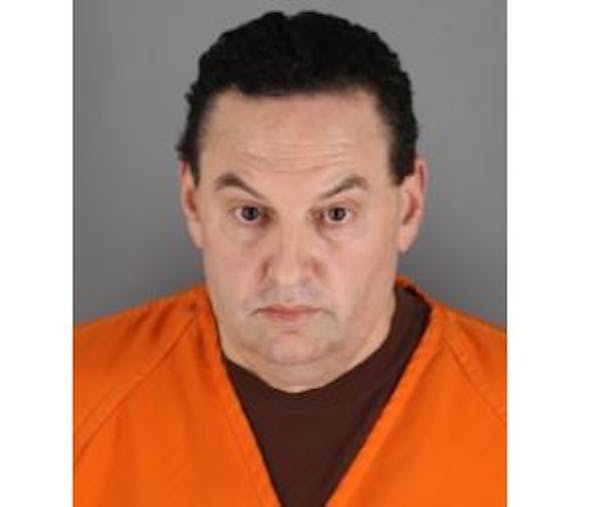Jurors on Wednesday watched the interrogation room interview of accused cold case killer Jerry Westrom during which he denied knowing the victim or being in her south Minneapolis apartment despite his DNA found throughout the scene where she was brutally stabbed to death.
"There's gotta be an explanation why scientifically you're there. It can't be a coincidence," Minneapolis police Sgt. Chris Karakostas said to Westrom in the February 2019 interview after showing him photos of a bloodied bed comforter, towel, T-shirt and washcloth left on a bloodied toilet seat, sink and bloody footprints.
"Your DNA is on every one of these locations. I'm just kind of wondering, do you have any idea why that would be?" asked Karakostas, who died late last year.
Westrom said no.
Soon the jury will be handed the case to decide whether prosecutors proved Westrom brutally stabbed Jeanne "Jeanie" Childs, 35, to death in 1993. Deliberation will begin Thursday after attorneys make their closing arguments. Westrom is charged with first-degree murder in her killing.
On Wednesday, the seventh day of testimony, Westrom's attorney Steven Meshbesher called only two witnesses to the stand before the defense rested its case. Prosecutors called dozens of witnesses the past week, namely forensic experts and law enforcement officials
Retired FBI special agent Chris Boeckers testified how he got Westrom's discarded hot dog napkin at the Wisconsin hockey arena that they used for forensic testing. The DNA was consistent with the previously unknown sample from Childs' apartment.
Based on that, Boeckers obtained a search warrant for a buccal swab and Westrom was interviewed in 2019 when he also gave palm, finger and footprints that linked him to Childs' killing.
Childs' boyfriend who leased the apartment and was allegedly her pimp, Arthur Gray, could've been the killer, Meshbesher has argued. Gray died in 2017.
But one of the witnesses Meshbesher called to testify said she remembers seeing Childs with a tall, white, blond-haired man in a trench coat going up the elevator of the apartment on the afternoon of the murder. That description doesn't match Gray or Westrom.
Bonita Reed, whose mother lived at the Horn Towers apartment where Childs lived with Gray, testified that Childs was with the man carrying a 12-pack of beer.
An hour later, Reed said, the man was running out of the stairwell without the trench coat on.
Boeckers' testimony raised doubt in Reed's version of events. She was interviewed twice by police after the murder and never mentioned any of this, he said.
"She hadn't mentioned that in either of the previous two contacts with the Police Department. The reports from 1993 made no mention of that person or a person fitting that description," Boeckers said.
The timing of when Reed said she saw Childs that day has varied as well. She testified it was in the evening, when in other interviews with police in recent years she said it was earlier in the day.
Meshbesher called on retired Minneapolis police Sgt. Barbara Moe, who revealed that some pieces of evidence in the Childs case were inadvertently placed in with a different case file. She made it right by placing them in the correct file.
Moe's involvement with the case predates any crucial discoveries with DNA and bloody footprints linking Westrom to the crime scene. She joined the homicide division in 1996 and said she can't remember exactly when she reviewed the Childs case but guessed 2010.
Meshbesher asked Moe about the hair found in Childs' hand and Moe said that it belonged to Gray and she agreed that's significant evidence. But when questioned by prosecutor Darren Borg, she agreed that if a DNA profile was consistent with items throughout a crime scene, that's also significant.
When he picked up the case in 2015, Boeckers reviewed files on Childs' electronic Rolodex and found the name "Jerry" with a corresponding phone number.
He said police tried to track that phone number but were unable to trace it to any particular person or uncover a last name. In the 2019 interview, he asked Westrom if that number meant anything to him and he said no.
Borg rested his case after asking Boeckers about the bloody footprints found in Childs' apartment. Boeckers testified that forensic scientists were able to identify Westrom as the source of the bloody footprints.
Brooklyn Park police make arrest after asking for help in search for man suspected of sexual assault at gunpoint

Attorney Tayler Rahm wins GOP backing in battleground Second District
North Oaks withdraws request for density exemption from Met Council

